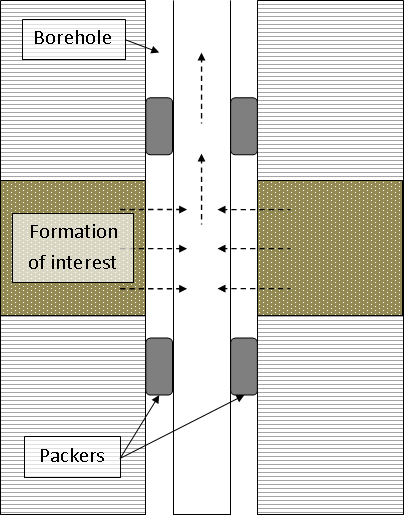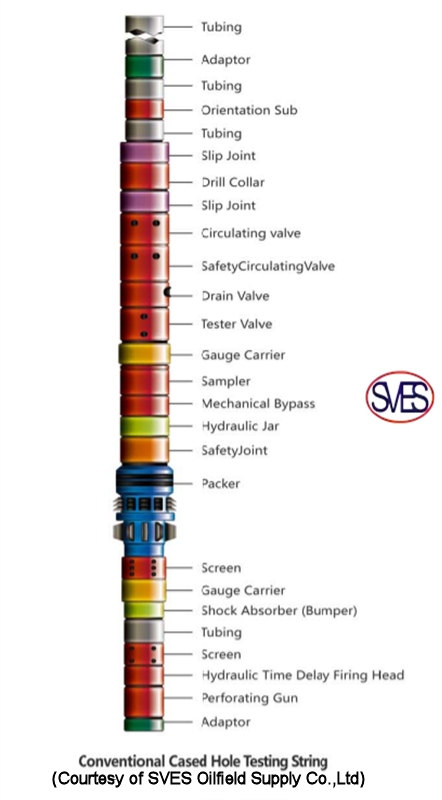Drill Stem Testing
Drill stem testing (DST) is an evaluation technique used by geologists to assess the commercial potential and reservoir characteristics of a subsurface formation during or after drilling a hole. This procedure involves deploying a specialized tool assembly, known as the drill stem test string, into the wellbore to isolate and test a specific geological zone of interest. The DST string typically includes components such as packers, test valves, pressure and temperature gauges, and sampling chambers, all attached to the drill pipe or tubing.
The primary objective of the DST is to allow the controlled flow of formation fluids—such as oil, gas, or water—into the wellbore or to the surface. This enables precise measurements of pressure, flow rates, and fluid composition. These all provide valuable insights into the reservoir’s productivity and properties.
 The DST process begins with lowering the test string into the well to the target depth. Inflatable or mechanical packers are set above and below the zone to isolate the tested formation from the rest of the wellbore, preventing fluid communication with other zones.
The DST process begins with lowering the test string into the well to the target depth. Inflatable or mechanical packers are set above and below the zone to isolate the tested formation from the rest of the wellbore, preventing fluid communication with other zones.
Once the formation is isolated with the packers, a valve in the test string is opened to allow formation fluids to flow, either into the drill pipe or, in some cases, to the surface for collection and analysis.
This flow period is carefully monitored, with real-time data recorded on downhole gauges to capture parameters such as initial reservoir pressure, pressure buildup, and flow rates. These measurements help determine key reservoir characteristics, including permeability (how easily fluids flow through the rock), porosity (the rock’s capacity to hold fluids), skin factor (damage or stimulation near the wellbore), and the presence of boundaries or faults in the reservoir. A series of charts are produced which require a trained eye to interpret.
In an open-hole DST, the test is performed in an uncased section of the well, directly exposing the formation, which is common in exploration or new wells. The test may involve single or multiple flow and shut-in periods to  gather comprehensive data. For example, a typical DST sequence includes an initial flow period to clean the formation, followed by a shut-in period to measure pressure buildup, and sometimes additional flow periods to assess sustained productivity. Fluid samples collected during the test are analyzed to determine the composition (e.g., oil API gravity, gas-to-oil ratio, or water content).
gather comprehensive data. For example, a typical DST sequence includes an initial flow period to clean the formation, followed by a shut-in period to measure pressure buildup, and sometimes additional flow periods to assess sustained productivity. Fluid samples collected during the test are analyzed to determine the composition (e.g., oil API gravity, gas-to-oil ratio, or water content).
The data obtained from the DST is crucial for the geologist to evaluate whether a well should be completed for production, plugged, or subjected to further testing or stimulation. For instance, high permeability and stable flow rates indicate a potentially productive reservoir, while low flow or high water content may suggest uneconomical conditions. The DST also aids in estimating reservoir size, recoverable reserves, and optimal production strategies data valuable to the engineer.
